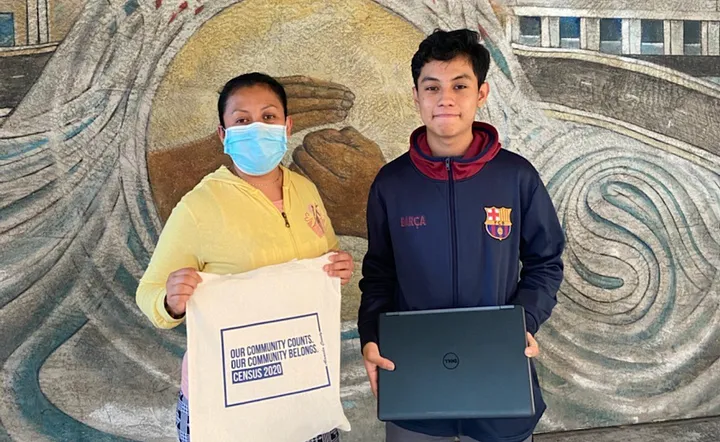The COVID-19 pandemic has exposed many disparities that have long been overlooked, few more obvious than the necessity of technology to participate in our increasingly digital world. With education transitioning to distance learning, jobs requiring telecommuting, and telehealth appointments skyrocketing, our reliance on technology and reliable internet access has increased substantially. It has become the difference between being able to earn a living, receive an education, and maintain health and well-being — or not. This increased reliance shines a spotlight on what many low-income families, often Black and Latinx households, and tribal and rural communities in California already knew: they lack equal access to the technology and reliable broadband needed to learn, work, and thrive in society, and have for decades.
In California, over 1.5 million students in grades K-12 (or 25%) lack adequate access to the internet, and 60% (or 924,258) of these students are Black, Latinx, or Native American. Without access to instruction, assignments, tutoring, and social supports, students of color, low-income, and rural students lack equitable opportunities to learn. Despite numerous philanthropic efforts, the California Department of Education estimated that over 700,000 laptops and over 300,000 Wi-Fi hotspots are still needed to ensure all students are connected before going back to school in a few short weeks.
Access to technology and broadband is also crucial to participation in the 21st-century workforce, to find and apply for work, access government resources, and telecommute. Yet, Black, Latinx, and Indigenous households are much less likely to have reliable broadband connectivity and technology, and face significant burdens in workforce participation and education. This was true before the COVID-19 pandemic, and those challenges have only been exacerbated.
For those with access to broadband, our increased reliance on technology has also threatened to overburden antiquated networks. Video conferencing tools like Zoom require synchronous internet access with increased download and upload speeds per household. To put it simply, the more devices connected to the same internet access point, the lower quality experience may be, thus further driving the need for higher-speed networks.
With trillions of dollars spent as part of pandemic recovery efforts, it is critical to prioritize digital equity by building fiber broadband networks in all zip codes that lack them and ensuring affordability. This isn’t to say that current solutions, such as creating Wi-Fi hotspots in school buses, aren’t helpful. But we must acknowledge that these investments are short-term fixes to a larger systemic issue. We must invest in fiber broadband to ensure high-speed connectivity across all of California. While broadband access is only the first step in a series of interventions needed to close the digital divide, legislators are currently working to make equitable access a reality.
California Senator Lena Gonzalez is prioritizing high-speed broadband access with S.B. 1130, the “Fiber for All” bill. If passed, S.B. 1130 would unlock $300 million sitting in the California Advanced Services Fund (CASF) that can be used to build broadband infrastructure where there are currently no service providers. The bill would raise minimum standards for telecommunications companies providing broadband service to communities by requiring any broadband network funded by the state to be high-capacity fiber and open access. A competing bill introduced by Assemblymember Aguiar-Curry, A.B. 570, also aims to use resources from the CASF to fund broadband infrastructure projects and prioritize underserved communities, while prioritizing DSL instead of high-speed fiber.
Broadband access is also being considered at the federal level, with the U.S. House of Representatives passing H.R. 2, the “Moving Forward Act”. The bill proposes $1.5 trillion in infrastructure funding, including $8.8 billion for a “broadband benefit” program to help low-income households and recently laid-off consumers pay for internet connections and $1.3 billion in funding for state and community digital inclusion initiatives. The Senate version of H.R. 2 allocates $100 billion for broadband access.
As the tech capital of the world and an epicenter of education, innovation, and creativity, California should prioritize access to high-speed broadband for all residents. Both S.B. 1130 and A.B. 570 are being considered by legislators, representing a defining decision on whether California will move toward the future focused on digital equity or not.
The COVID-19 pandemic has shown us the consequences of ignoring disparities in something as basic as connectivity. We must focus on building infrastructure to ensure California communities are connected. We must invest in high-speed broadband networks now to ensure we are set up to be equitably and competitively networked for our future. If nothing is done, the impact will be felt across our state for decades to come.
Lili Gangas is the Chief Technology Community Officer at The Kapor Center.

